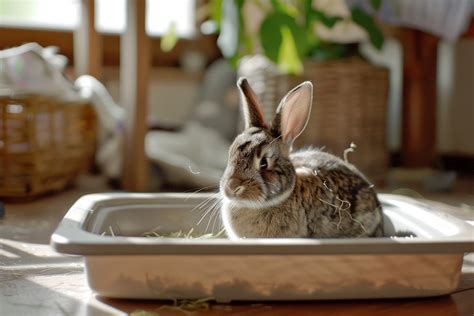Introduction
House training pets, particularly cats and small animals, is crucial for maintaining a clean and healthy environment. Litter training provides designated areas for pets to eliminate waste, promoting hygiene and eliminating unpleasant odors. This comprehensive guide will delve into the fundamentals of pet litter training, covering various aspects from establishing routines to understanding behavioral patterns.

The Benefits of Litter Training
- Improved Hygiene: Litter training keeps pets’ elimination areas isolated, preventing messes and odors from spreading throughout the home.
- Healthier Pets: Keeping waste contained reduces the risk of infections and parasites that can thrive in unsanitary conditions.
- Easier Cleanup: Designated litter boxes simplify cleanup, making it quick and efficient to maintain a tidy environment.
- Pet Comfort: Litter training provides pets with a private and comfortable space to eliminate, reducing stress and anxiety.
Litter Training Fundamentals
Step 1: Choosing the Right Litter
- Types: Consider clumping clay litter, crystal litter, pine litter, or paper-based litter. Each type has unique pros and cons (see Table 1).
- Quantity: Fill the litter box to a depth of 2-3 inches.
Step 2: Placement
- Privacy: Place the litter box in a quiet and easily accessible location.
- Multiple Boxes: For cats, it’s recommended to have one litter box per cat plus one extra.
- Avoid Frequent Changes: Once your pet becomes accustomed to the litter box location, avoid moving it unless necessary.
Step 3: Introduction
- Kitten or Puppy: Place your pet in the litter box several times a day, particularly after meals, naps, or playtime.
- Adult Cat or Small Animal: If your pet is already used to going outside, confine it to a room with a litter box until it learns to use it.
- Positive Reinforcement: Reward your pet with treats or praise when they use the litter box correctly.
Behavioral Patterns and Training Issues
Why Do Pets Avoid the Litter Box?
- Cleanliness: Dirty or infrequently changed litter boxes deter pets from using them.
- Location: An inconvenient or inappropriate litter box location can discourage use.
- Health Problems: Medical issues, such as urinary tract infections or urinary incontinence, can affect litter box habits.
Solving Litter Box Avoidance
- Rule Out Medical Issues: Consult a veterinarian to rule out any underlying health conditions.
- Keep It Clean: Scoop the litter box daily and change the litter completely every 1-2 weeks.
- Try Different Litters: Experiment with different litter types and textures to find one that your pet prefers.
- Observe Your Pet: Monitor your pet’s behavior to identify any triggers that lead to litter box avoidance.
Litter Box Habits by Pet Type
Cats
- Cats are highly sensitive to cleanliness, preferring clean litter boxes.
- They typically scratch and dig at the litter before eliminating.
- About 90% of cats are successfully litter trained by 6 months of age.
Dogs
- Dogs are more trainable than cats but may require more time and effort.
- They often need to be taken outside for elimination, especially puppies.
- House training success rates for dogs vary depending on breed and individual temperament.
Small Animals (Rabbits, Ferrets, Guinea Pigs, etc.)
- Small animals are typically less consistent with litter training than cats or dogs.
- They may have designated spots where they prefer to eliminate, so providing multiple litter boxes can be helpful.
- Patience and consistency are key to successful litter training in small animals.
Future Trends and Innovations
The pet litter industry is constantly evolving, with new products and technologies emerging. Here are some future trends to watch:
- Self-Cleaning Litter Boxes: Automated litter boxes that scoop and dispose of waste, reducing manual cleanup.
- Odor-Neutralizing Litters: Litters infused with fragrances or activated charcoal to control unpleasant odors.
- Health-Monitoring Litters: Litters that detect changes in urine or feces composition, indicating potential health issues.
Case Study: Successful Litter Training with a Finicky Cat
Sarah adopted Bella, a 1-year-old cat known for avoiding the litter box. After consulting with a veterinarian to rule out medical issues, Sarah implemented the following strategies:
- Frequent Cleaning: She scooped the litter box several times a day and changed the litter completely every week.
- Experimentation: She tried different litter types until she found one that Bella preferred.
- Positive Reinforcement: She praised Bella every time she used the litter box and rewarded her with treats.
- Patience and Consistency: Despite occasional setbacks, Sarah remained patient and consistent with her training routine.
Within a month, Bella was consistently using the litter box, demonstrating the importance of patience and a tailored approach to litter training.
Conclusion
Litter training is an essential aspect of pet ownership, contributing to both pet health and home cleanliness. By understanding the unique needs and behavioral patterns of different pet types, pet owners can effectively train their animals to use litter boxes. As the industry continues to evolve, new technologies and innovations promise to make litter training even easier and more efficient in the future.





















